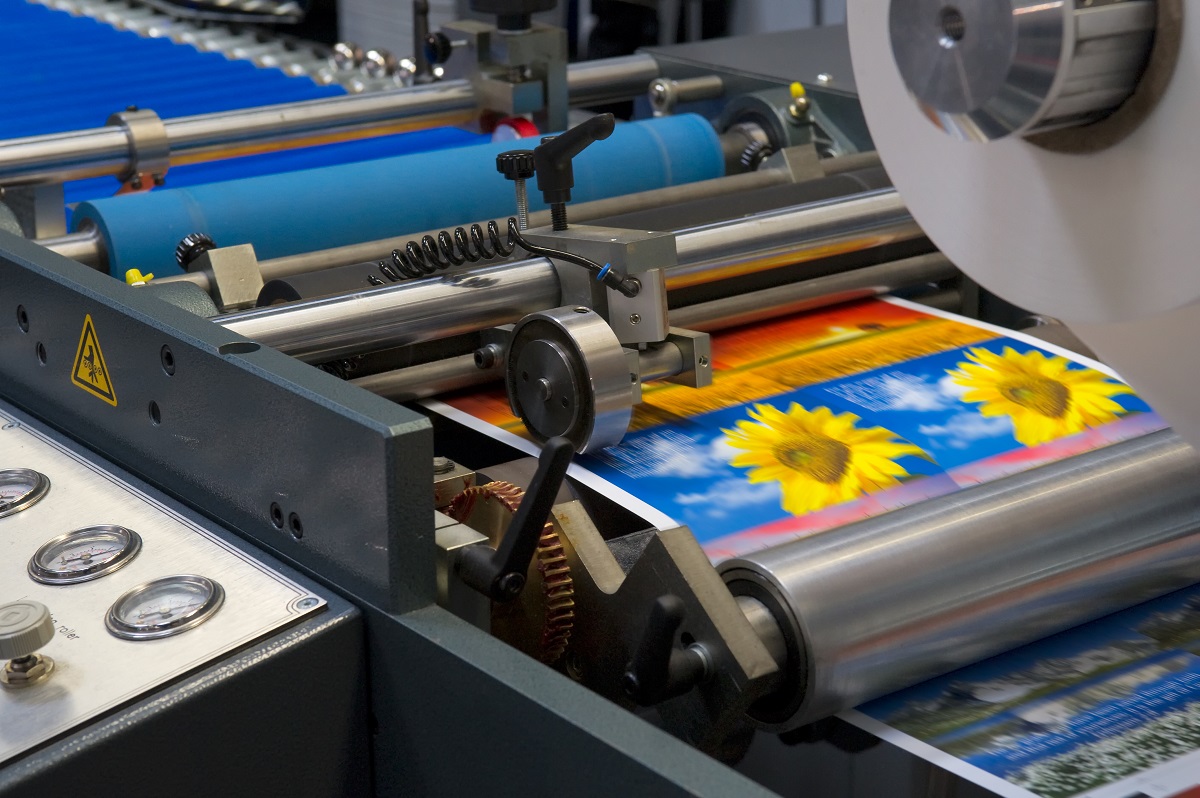The luxury and elegance offered by foil stamping contribute to its enduring popularity. Used for hundreds of years to gild book covers, foil stamping’s applications now include decorating paper, plastics, packaging materials, and more.
Read on to learn about the foil stamping process
What is Foil Stamping?
Foil stamping is a printing process that uses heat and pressure to apply metallic or pigment foils to paper
or other material. The method uses a hot foil stamper machine that creates a shiny, raised design on the paper’s surface.
People use foil stamping for wedding invitations, business cards, and other important documents to give them a luxurious look. It’s also commonly used to enhance the appearance of packaging, like boxes and paper bags.
How Does Foil Stamping Work?
Heat, pressure, and time are the three elements of foil stamping. Heat activates the adhesive while pressure pounds it into place. The foil film is sandwiched between a heated metal die and the surface for foiling.
There are three foil stamping methods, and each uses a different way of transferring the metallic elements onto the material.
Hot Foil Printing
The basic principle of hot foil printing is to use heat to activate an adhesive. Then pressure pounds the foil
- The hot foil stamp machine facilitates the transfer of the metallic elements onto the surface to be foiled.
Cold Foil Printing
The cold foil printing process involves two main steps. The first is the application of the adhesive to the surface where you require metallic foil highlights. The second is the application of the foil carrier film over it. Using a pressurized roller will help make the foil stick to the areas where the adhesive is present.
Digital Foil Printing
Digital foil printing is a relatively new foil printing technique that uses digital printing technology to
transfer the metallic elements onto the material. This foil printing method does not require a metal die or heating process. Instead, the foil is directly printed onto the material with a digital printer.
Factors to Keep in Mind
When foil stamping, note that the design should be well-planned since the foil is only applied in
certain areas. Also, remember that foil stamping is different from embossing.
Foil stamping uses metallic foil to create highlights or designs on material. On the other hand, embossing is a printing process that uses metal or plastic dies to create a raised design or impression on paper or other materials.
An even surface is essential for foil stamping because it ensures that the foil is correctly applied to the
paper. If the surface is uneven, it might result in a streaky or blotchy effect.
Durable, High-Quality Hot Foil Stamper Machines
Foil stamping instantly elevates the look of paper products and packaging. At SBL Machinery, we offer hot foil stamp machines that ensure clean and precise impressions on paper, cardboard, and plastic sheets.
Our machines are durable enough to withstand nonstop production day in and day out. To learn more about the products we carry, reach out to us today.



Related Posts
A sneak peek of 2024 DRUPA⼁From background history to current situation, exhibition products, and visitor results at once
Read MoreHot Stamping Machine Installation and Acceptance Guide: 3 Key Considerations for Buyers
Read MoreFolder Gluer Machine Installation and Acceptance Guide: 3 Key Considerations for Buyers
Read More